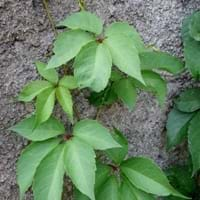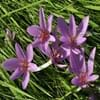Life Span
Perennial
Perennial
Type
Bulb or Corm or Tuber
Vines
Origin
Hybrid origin
Central North America, Eastern Mexico, Eastern North America, Eastern United States, Southeastern Canada
Types
boissieri , cupanii , hungaricum , kesselringii
Not Available
Number of Varieties
Not Available
Habitat
Temperate Regions
Brushlands, Chaparral, open Woodlands, Riverbanks, shaded woods, Stream side
USDA Hardiness Zone
Not Available
7-8
AHS Heat Zone
Not Available
Not Available
Sunset Zone
21,22
Not Available
Habit
Clump-Forming
Spreading
Flower Color
Purple, Violet
Not Available
Flower Color Modifier
Bicolor
Bicolor
Fruit Color
Not Available
Black, Blue
Leaf Color in Spring
Green
Green, Purplish Green
Leaf Color in Summer
Light Green
Gray Green
Leaf Color in Fall
Several shades of Green
Blue Green
Leaf Color in Winter
Light Green
Gray Green
Leaf Shape
Long Linear
Palmate
Plant Season
Spring, Fall
Late Summer
Sunlight
Full Sun, Partial Sun
Full Shade, Partial shade, Partial Sun
Type of Soil
Loam
Loam, Sandy
The pH of Soil
Acidic, Neutral
Neutral, Slightly Acidic, Slightly Alkaline
Soil Drainage
Well drained
Well drained
Bloom Time
Late Summer, Early Fall
Late Summer, Summer
Tolerances
Drought
Drought
Where to Plant?
Ground
Ground
How to Plant?
Divison, From bulbs, Seedlings
Seedlings
Plant Maintenance
Medium
Low
Watering Requirements
Keep ground moist
Needs less watering
In Summer
Lots of watering
Moderate
In Spring
Moderate
Moderate
In Winter
Average Water
Ample Water
Soil pH
Acidic, Neutral
Neutral, Slightly Acidic, Slightly Alkaline
Soil Type
Loam
Loamy, Moist, Sandy
Soil Drainage Capacity
Well drained
Well drained
Sun Exposure
Full Sun, Partial Sun
Full Shade, Partial shade, Partial Sun
Pruning
no pruning required
Prune after flowering, Prune for shortening long shoots, Prune in late summer or fall
Fertilizers
All-Purpose Liquid Fertilizer
Fertilize every year
Pests and Diseases
Dry root rot, Pest Free
Aphids, Black Vine Weevil, Caterpillars, Flea Beetles, Leaf eating pests, Leaf Hoppers, Scale
Plant Tolerance
Drought
Drought
Flower Petal Number
Single
Single
Foliage Texture
Coarse
Fine
Foliage Sheen
Glossy
Matte
Attracts
Whiteflies
Birds
Allergy
Poisonous to grazing animals
Abdominal pain, Bloody vomiting, Diarrhea, dilation of pupils, drowsiness, Headache, Nausea, Skin irritation, Sweating, Toxic, Twitching of face, Weak pulse
Aesthetic Uses
along a porch, deck or patio, Borders, Mixed Border, small hedge
Showy Purposes, Used for decorating walls, fences, gates, hedges, etc.
Beauty Benefits
No Beauty Benefits
No Beauty Benefits
Environmental Uses
Air purification
Air purification, Food for animals, Food for birds
Medicinal Uses
anti rheumatic, cathartic
Antirheumatic, Cough, Diarrhea, Expectorant
Part of Plant Used
Root
Bark, Fruits, Root, Sap
Other Uses
Showy Purposes
Used as Ornamental plant, Used in herbal medicines
Used As Indoor Plant
No
No
Used As Outdoor Plant
Yes
Yes
Garden Design
Container, Cutflower, Foundation, Lawns and Turf, Mixed Border
Vine, Wall
Botanical Name
COLCHICUM 'Lilac Wonder'
Parthenocissus quinquefolia
Common Name
Hybrid Autumn Crocus, Hybrid Meadow Saffron
Virginia creeper, Victoria creeper, five-leaved ivy, or five-finger
In Hindi
meadow saffron
वर्जीनिया लता
In German
Herbstzeitlose
Selbstkletternde Jungfernrebe, Wilder Wein
In French
Colchique d'automne
vigne vierge vraie, vigne vierge à cinq folioles, vigne vierge de Virginie
In Spanish
Estado de conservación
Parra Virgen, Viña virgen y Enredadera de Virginia
In Greek
meadow saffron
αναρριχητικό φυτό της Βιρτζίνια
In Portuguese
Colchicum autumnale
Virginia Creeper
In Polish
Colchicum autumnale
winobluszcz
In Latin
autumnale
Virginia creeper
Phylum
Tracheophyta
Magnoliophyta
Class
Magnoliopsida
Magnoliopsida
Family
Liliaceae
Vitaceae
Genus
Colchicum
Parthenocissus
Clade
Angiosperms, Monocots
Angiosperms, Eudicots, Rosids
Tribe
Not Available
Not Available
Subfamily
Not Available
Not Available
Number of Species
Not Available
Not Available
Importance of Meadow Saffron and Virginia Creeper
Want to have the most appropriate plant for your garden? You might want to know the importance of Meadow Saffron and Virginia Creeper. Basically, these two plants vary in many aspects. Compare Meadow Saffron and Virginia Creeper as they differ in many characteristics such as their life, care, benefits, facts, etc. Every gardener must at least have the slightest clue about the plants he wants to plant in his garden. Compare their benefits, which differ in many ways like facts and uses. The medicinal use of Meadow Saffron is anti rheumatic and cathartic whereas of Virginia Creeper is Antirheumatic, Cough, Diarrhea and Expectorant. Meadow Saffron has beauty benefits as follows: No Beauty Benefits while Virginia Creeper has beauty benefits as follows: No Beauty Benefits.
Compare Facts of Meadow Saffron vs Virginia Creeper
How to choose the best garden plant for your garden depending upon its facts? Here garden plant comparison will help you to solve this query. Compare the facts of Meadow Saffron vs Virginia Creeper and know which one to choose. As garden plants have benefits and other uses, allergy is also a major drawback of plants for some people. Allergic reactions of Meadow Saffron are Poisonous to grazing animals whereas of Virginia Creeper have Abdominal pain, Bloody vomiting, Diarrhea, dilation of pupils, drowsiness, Headache, Nausea, Skin irritation, Sweating, Toxic, Twitching of face and Weak pulse respectively. Having a fruit bearing plant in your garden can be a plus point of your garden. Meadow Saffron has no showy fruits and Virginia Creeper has no showy fruits. Also Meadow Saffron is not flowering and Virginia Creeper is flowering. You can compare Meadow Saffron and Virginia Creeper facts and facts of other plants too.





